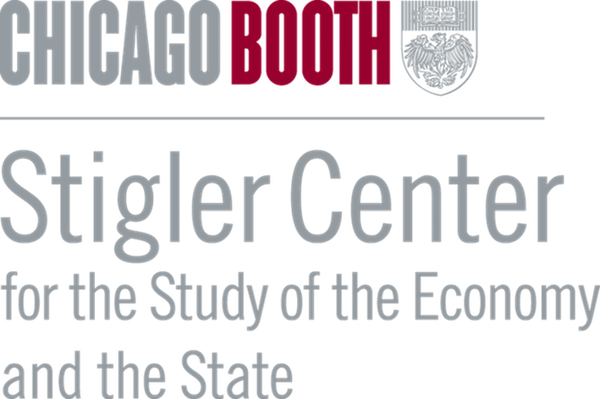Laura Phillips-Sawyer writes that history shows that antitrust and industrial policy have often served as complements to one another. Industrial policy has succeeded when it has targeted specific industries to invest in their ability to compete, rather than protect them from competition.
This article is part of a symposium exploring the role of big business in a globalized economy. In an era of intensifying global competition, can states pursue policies and regulations to disperse market power and prevent consolidation at home without forfeiting international competitiveness? How can the U.S. government regulate Big Tech and other big businesses at home without hamstringing their ability to compete on the global stage? How can the EU build its own Big Tech giants without undermining its pioneering digital protections for users and society and permitting the harms that can come from market concentration? You can read the contributions from Xavier Vives, Eleanor Fox and Harry First (writing together), Cristina Caffarra, Laura Phillips Sawyer, and Beatriz Kira as they are published here.
TThe relationship between industrial policy and antitrust law, though often framed as a tension between state intervention and market competition, is historically and fundamentally complementary. While distinct in their application—antitrust is typically case-by-case and retrospective, whereas industrial policy is targeted and forward-looking—both regulatory domains share the aim of promoting procompetitive effects, minimizing negative externalities, and ultimately enhancing national productivity by correcting market failures, encouraging innovation, and boosting consumer choice. United States history demonstrates that industrial policy is most successful when it targets specific industries to invest in their ability to compete, rather than protecting them from competition.
This complementary relationship has evolved through distinct historical periods. First, in the late nineteenth century, Congress passed the Sherman Antitrust Act of 1890, in part to mitigate the economic inequality and political polarization stoked by high import tariffs. Tariffs, then the primary tool of national industrial policy, were widely criticized for creating monopolies and “trusts” by protecting certain producers and increasing input costs across other industries. The dual cataclysms of the Great Depression and World War II necessitated a profound shift, pushing the U.S. and the international community toward a framework that prioritized international cooperation on trade and finance. This post-war imperative to foster long-term peace shaped domestic policies across regulatory domains, including antitrust. International agreements, such as the Bretton Woods system (1944) and the General Agreement on Tariffs and Trade (GATT, 1947), established mechanisms for lowering tariffs and promoting open markets and nondiscrimination, guided by an antitrust-like thinking designed to avoid the anticompetitive effects of “beggar-thy-neighbor” protectionism. During this period, U.S. industrial policy transitioned toward more targeted, sector-specific investments that proved more procompetitive than import duties. Coupled with stringent federal antitrust enforcement, this approach fostered structural changes and promoted new national champions in high-tech goods and machinery.
As global convergence in regulatory thinking is being unwound today, policymakers must recognize that returning to the earlier period of industrial policy dominated by broad-based high tariffs—with antitrust enforcement merely positioned to mitigate the resulting market distortions—would be a mistake. The historical evidence shows that such broad tariff-based policies largely failed to foster infant industries and imposed economic costs that fueled political polarization. Instead, the lesson of the post-WWII era is that industrial policies must be calibrated to enhance competition and operate in concert with, not in opposition to, antitrust principles.
The Sherman Antitrust Act of 1890 and tariffs, “the Mother of the Trusts”
The 51st Congress’ passage of the Sherman Antitrust Act of 1890 had as much to do with domestic market competition as it did with protective tariffs. Throughout the nineteenth century, tariffs were the main tool of national industrial policy. Tariffs generated federal revenue and ostensibly protected domestic producers from more efficient foreign competition. However, their distortionary effects on prices, regional development, and market competition were widely acknowledged. Indeed, such debates went all the way back to Alexander Hamilton’s Continentalist and Federalist Papers, nineteenth century popular criticism of tariffs is perhaps most famously cataloged by Henry Demarest Lloyd and Ida Tarbell and later illustrated by Puck magazine. Ultimately, many in Congress argued that an antitrust law could offer a necessary corrective to the market distortions brought about by protective tariffs.
Republican and Democratic lawmakers were divided over tariff, antitrust, and monetary policies, and they struggled equally to find legislative remedies for their constituents’ complaints. Agrarians in the Midwest and South urged Democratic support for an antitrust law that would protect against the abuses of combinations and monopolies, which included railroads supported by steel tariffs and jute-bag manufacturers protected by a tariff on jute textiles. Michigan meatpackers decried the salt tariff and its monopoly. At each turn, constituents pinpointed tariffs that protected certain producers as the key cause of “trusts.” In his 1887 message to Congress, President Grover Cleveland, a Bourbon Democrat from New York, complained that tariffs unfairly protected certain industries while also raising prices on domestic-manufactured goods to meet the tariff rate. In turn, this increased input costs across all industries. As the economic historian Doug Irwin chronicled in Clashing Over Commerce, Cleveland campaigned to cut this “unnecessary taxation.” In the parlance of our times, broad tariffs misallocated resources, distorted markets, and discredited market exchange as rigged. For Cleveland, ending the tariffs would restore market competition.
Republican lawmakers, on the other hand, had long viewed tariffs as necessary to shelter infant manufacturers and grow national champions. In 1888, Senator John Sherman, the eponymous sponsor of the original antitrust bill, argued that the trusts could be sufficiently regulated by prohibiting combinations and anticompetitive conduct, and thus tariffs could be maintained. For then-Representative William McKinley, tariffs fostered industrial development, protected industrial workers, and funded federal coffers, composing a substantial portion of federal revenue until 1913. If uneven economic development was the result, antitrust law offered a compromise remedy. Indeed, President Benjamin Harrison signed both the Tariff Act of 1890 (better known as the McKinley Tariff), which raised the average duty to 50%, and the Sherman Antitrust Act of 1890.
Twin problems arose for the Republicans of the late-nineteenth century. One was that regressive tariff policies had been too successful in collecting revenue. (The McKinley Tariff only dropped duties on sugar, which both drastically reduced tax revenue and prompted subsequent subsidies granted to the industry.) This drained currency from the economy that may have flowed to other types of consumption and investment across industries. It also stoked deflationary pressures that squeezed debtors, especially farmers who were dependent on credit, and further inflamed regional, political polarization. Secondly, American manufacturers in natural-resource abundant industries—such as steel and iron, oil refining, canning, and cigarette-rolling—had already achieved scale in production and entered export markets. They did not need protection, and industry leaders advocated reciprocity agreements instead.
Those debates continued apace for decades: tariff rates fluctuated with political pressures while domestic antitrust enforcement largely focused on killing off producer cartels and labor unions. Looking back, Irwin has argued that broad tariffs largely failed to foster infant industries for two reasons. They were designed for political purposes, not industrial expansion. And, where Congress did identify market failures that might be alleviated through targeted import tariffs, such as in the tinplate industry, the results were mixed. On the one hand, when the McKinley Tariff moved rates from 30% to 70%, domestic investments followed and the tariffs were subsequently dropped. However, the tariff imposed costs on consumers and, as Irwin argues, a domestic industry would have developed, albeit more slowly, due to falling iron ore prices. Nevertheless, one thing remains clear: the economic costs of broad tariffs were felt acutely by some groups, which in turn informed the widening economic and political polarization of the Gilded Age, encouraging the formation of the American Populist Party in 1891. Such political and economic polarization would not be seen again until today.
The Interregnum: industrial policy and the Great Depression
Political polarization simply begat more tariffs as agricultural interests likewise campaigned for both price-supports and protective tariffs. Famously, the Republican-sponsored Smoot-Hawley Tariff of 1930 answered that call as the Great Depression took its toll and slashed investment, consumption, and prices, exacerbating the debts of U.S. farmers. The new tariffs raised existing rates on both agricultural and industrial products to reach their highest levels. Rather than ameliorative, the result was disastrous.
As economic historian Barry Eichengreen explained in his classic book on the Great Depression, Golden Fetters, raising tariff rates accelerated and prolonged the global economic depression. The Great Depression had many causes—for example, the U.S. Federal Reserve raised interest rates in 1928 and 1929, which attracted capital inflows and drained many European countries’ treasury coffers—but protective tariffs played an important role in the spread and duration of the global downturn. Many European countries had accumulated vast debts to the U.S. during World War I, and low interest rates through the 1920s fueled further borrowing. These debtor-countries financed their debts by exporting. However, as the costs of both capital and imports rose, countries turned inward—they raised interest rates, taxes, and tariffs—to fund critical imports and public spending.
As the conflagration spread, international cooperation continued to falter. Capital flight eroded bank balance sheets, consumer and investor confidence, and the value of currencies, and no lender-of-last-resort proved forthcoming. Further, the gold standard’s fixed exchange rate made revaluaing currencies and debts impossible without international cooperation. Instead, countries suspended external debt servicing and, eventually, ended gold convertibility in order to stem the outflow of capital and allow policymakers to focus on domestic recovery efforts. (The U.S. defaulted when it revalued the dollar’s gold convertibility in 1934, as Sebastian Edwards has explained.)
Postwar industrial policy and international cooperation
Ultimately, the dual cataclysms of the Great Depression and WWII pushed the U.S. and the international community toward a framework that prioritized international cooperation in finance and trade. The Bretton Woods agreement of 1944 reinstated a (revalued) gold standard, wherein currencies were pegged to the U.S. dollar, which was convertible to gold at a fixed rate. Relatedly, in 1947, the General Agreement on Tariffs and Trade (GATT) established a framework for lowering tariffs and import quotas, borrowing from President Franklin Roosevelt’s reciprocal trade agreements of mid-1930s. By the 1940s, these trade agreements held bipartisan support. (After a long series of negotiations, the World Trade Organization replaced GATT in 1995, adding services and intellectual property to the agreement.) Competition policy was not explicitly enumerated in these agreements, but the fundamental precepts of nondiscrimination and open markets informed their core. These agreements, guided by antitrust-thinking, transformed industrial policies to avoid the anticompetitive effects of beggar-thy-neighbor tariffs and monetary policy.
Cooperation was key. If the point was to create a system of mutual trust that could facilitate global trade, long-term peace, and national security, it required continued cooperation on some agreed upon principles of exchange. Under the Bretton Woods system, countries negotiated (often contentious) currency revaluations through the International Monetary Fund (IMF) in response to domestic balance of payments crises. Indeed, there were many. Even after President Richard Nixon suspended gold convertibility in 1971 (in response to domestic inflation and dwindling gold reserves) and officially ended the Bretton Woods system in 1973, the U.S. and other members of the G5 (France, Germany, Japan, and the United Kingdom) still treated currency revaluation as a cooperative endeavor. For example, when U.S. inflation levels reached 9% annualized in 1979, the Federal Reserve responded by raising interest rates (commonly known as the Volcker Shock for Fed Chair Paul Volcker). Inflation peaked at 11.6% in March 1980, and the Fed responded by raising the federal funds rate to 20%. Foreign capital poured into the U.S., strengthening the U.S. dollar relative to trade partners. In turn, U.S. manufacturers lost competitiveness, at home and abroad. The Plaza Accord of 1985 devalued the U.S. dollar in response to these movements, but American industries were already affected.
Maintaining international cooperation required continued dialogue and often, exceptions. Although GATT’s “most-favored nation” principle of nondiscrimination among trade partners pushed tariffs lower, it also contained provisions that allowed for certain restrictions to manage domestic economies, protect public health and safety, and ensure national security, among other issues. For example, the Tariff Commission received applications from domestic companies for “escape-clause” exemptions from lower duties on foreign goods (i.e., higher tariffs), though it approved only one between 1947 and 1951—setting a trend that would largely continue to the present. In the immediate postwar era, export-oriented American manufacturers, as well as organized labor, supported free trade both because the U.S. dominated international markets and because imports into the U.S. provided foreigners with U.S. dollars to purchase more American goods and services. American economic hegemony seemed to also temper the business response to aggressive antitrust enforcement. This was characterized by stringent federal enforcement of the Celler-Kefauver Anti-Merger Act of 1950 and strict prohibitions against business conduct believed to enhance or extend a firm’s market power, such as tying contracts, price discrimination, or vertical restraints.
That sentiment shifted as Western Europe and Japan’s productive capacity began to challenge American manufacturers’ market dominance in the mid-1960s, and as Taiwan and South Korea began exporting labor-intensive manufacturers by the 1970s. Trade Adjustment Assistance plans offered displaced workers retraining and income supplements; but, ultimately, those appear to have been woefully insufficient responses to late twentieth century job displacements in low-skill manufacturing. When in 1971 the U.S. experienced its first merchandise trade deficit since 1935, many businesses in textiles, apparel, and consumer electronics and their workers demanded greater federal relief. The Trade Act of 1974 strengthened the administrative systems allowing for “more escape-clause cases and antidumping actions,” but these interventions did little to alleviate the displacements brought by economic structural change. In the aggregate, American manufacturers fared well through the 1970s, returning to a trade surplus until the early 1980s. However, the U.S. export mix shifted toward high-tech goods and machinery, including electrical machinery, aerospace, semiconductors, and computers, which employed highly-skilled workers. These were the new national champions, and presidents of both parties chose to protect those gains, in part, by not using trade policy to protect displaced industries and workers.
In fact, modern U.S. industrial policies promoted those structural changes through a variety of interventions, setting the stage for new types of industrial policies. Since the 1950s, the Defense Advanced Research Projects Agency (DARPA) has funded projects for the advancement of security-related technologies, famously spurring early internet technologies among other achievements. The DARPA model facilitates collaborative public-private ventures, wherein a program director from industry or academia oversees multiple projects in a particular area and in consultation with researchers and private firms. Such dialogue can identify bottlenecks to business, such as constricted inputs, insufficient job training, or low capital investments. While the federal government still engages in “moonshot” projects to promote break-through innovations, such as the Apollo mission to the moon or the Covid vaccine program, the new trend in industrial policy has been toward customized public services and inputs that foster competition without picking winners and losers.
Pro-Competitive industrial policy for the twenty-first century?
These frameworks for international trade—despite their contradictions and shortcomings—pushed member-countries away from blanket tariff-protectionism and toward various types of targeted subsidies typically in export-oriented industries, suggesting that market competition plays a role in successful industrial policy. As Réka Juhász, Nathan Lane, and Dani Rodrik discuss in their 2024 survey of the recent literature, the ubiquity of industrial policies globally, and especially in high-income countries, has encouraged new empirical research on policy effects, which are notoriously difficult to disaggregate. Broadly, the new research tests whether the desired behavioral, and eventually structural, change was achieved and whether spillover effects (positive and negative) could be measured. These studies tend to offer a more nuanced and favorable assessment of “pro-competitive industrial policies.”
Complementary competition and industrial policies played an important role in structural changes in the postwar U.S. political economy. The problem, however, is that these policies have done little to ameliorate the growing reality that many Americans struggle to find a well-paying, stable “good” job, which often require higher education and mobility. The merchandise trade deficit that opened in the 1980s accelerated in the twenty-first century, signaling the loss of millions of manufacturing jobs coupled with a profound growth in business services as well as health and education services. Without more, in terms of educational access, redistribution, and job training, the success of postwar industrial policy and its subsidization of high-tech industry may be its undoing. Nevertheless, as history shows, industrial policy can be calibrated to enhance international competitiveness. The Trump administration’s emphasis on tariffs may only augur further economic inequality, as tariffs are passed-through to consumers, and political polarization.
Author Disclosure: The author reports no conflicts of interest. You can read our disclosure policy here.
Articles represent the opinions of their writers, not necessarily those of the University of Chicago, the Booth School of Business, or its faculty.
Subscribe here for ProMarket’s weekly newsletter, Special Interest, to stay up to date on ProMarket’s coverage of the political economy and other content from the Stigler Center.






